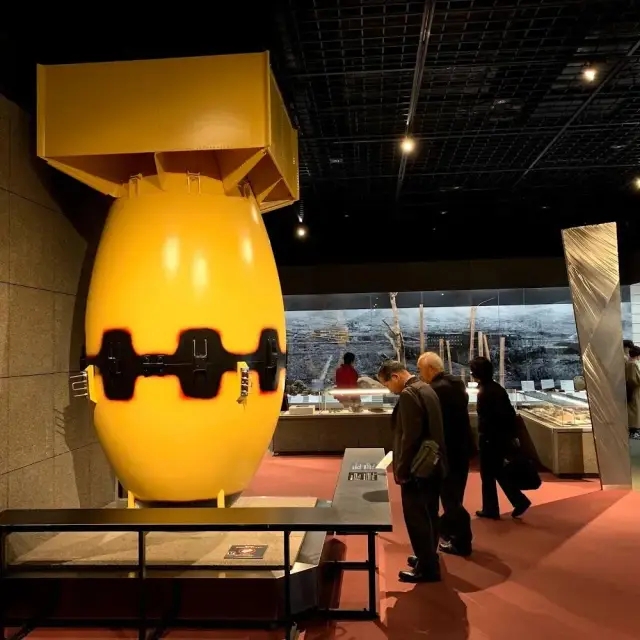Nagasaki, a city located on the northwest coast of Kyushu Island in Japan, is renowned for its rich history, cultural diversity, and scenic beauty. Despite the tragic events of August 9, 1945, when it became the second city to be struck by an atomic bomb, Nagasaki has emerged as a vibrant city that attracts visitors with its unique blend of historical significance and cultural heritage.
One of the most poignant places to visit in Nagasaki is the Peace Park and Atomic Bomb Museum. These sites commemorate the bombing and its aftermath, offering a somber reflection on the horrors of nuclear warfare. The Peace Park is a serene area filled with memorials and sculptures donated by various countries, symbolizing a global desire for peace. The museum provides a detailed and moving account of the bombing, its impact on the city, and the stories of the survivors. Visiting these sites is both an educational and emotional experience, highlighting the resilience and hope that have defined Nagasaki’s recovery.
In contrast to these somber sites, Nagasaki also boasts vibrant and diverse cultural attractions.
The city’s diverse religious heritage is evident in sites like Urakami Cathedral. It stands as a symbol of the hidden Christian communities that persisted in Nagasaki despite periods of severe persecution. The cathedral, along with several other Christian sites in the region, is part of a UNESCO World Heritage designation that honors these “Hidden Christian Sites in the Nagasaki Region.”
For those who appreciate natural beauty, Mount Inasa is a must-visit. The mountain offers one of the best night views in Japan, with the city’s lights creating a dazzling panorama. The observatory at the summit can be reached by cable car, and the view is truly breathtaking, especially after dark.
Nagasaki’s festivals are another highlight. The Nagasaki Kunchi, held every October, is a vibrant celebration featuring traditional dances, elaborate floats, and dragon dances. This festival reflects the city’s cultural amalgamation, with influences from China and Europe. Similarly, the Lantern Festival, which marks the Chinese New Year, transforms the city with thousands of colorful lanterns, creating a magical atmosphere.
Culinary delights in Nagasaki also reflect its international influences. Local specialties such as champon (a hearty noodle dish) and castella (a Portuguese sponge cake) are must-tries for any visitor. These dishes are a testament to Nagasaki’s history as a melting pot of cultures.
Nagasaki’s unique blend of history, culture, and natural beauty makes it a compelling destination. From its poignant historical sites to its vibrant festivals and diverse culinary offerings, the city provides a rich and multifaceted experience for visitors. Despite its past tragedies, Nagasaki stands today as a symbol of peace, resilience, and cultural diversity.
Itinerary
https://www.dekitabi.com/itinerary/peace-park-mount-inasayama-tour
Start this itinerary visiting The Nagasaki Peace Park, a tranquil space that commemorates the atomic bombing of Nagasaki on August 9, 1945, which destroyed a significant portion of the city and killed tens of thousands of inhabitants. The complex is comprised of two parks and a memorial museum. In the center of the complex is the Hypocenter Park with a simple, black monolith that marks the explosion’s epicenter. Not far from it stands a damaged pillar of the former Urakami Cathedral which was destroyed in the blast. Then continue to visit Mount Inasa. The night views from Mount Inasa are ranked among Japan’s three best night views besides the views from Mount Hakodate and Mount Rokko.

https://www.dekitabi.com/attraction/peace-park-nagasaki
Peace Park
Regal, serene park built in 1955 to honor those who died in the atomic bombing & to promote peace.

https://www.dekitabi.com/attraction/urakami-cathedral-nagasaki
Urakami Cathedral
This large Catholic church was rebuilt in 1959 after being destroyed by an atomic bomb in WWII.

https://www.dekitabi.com/attraction/hypocenter-park-nagasaki
Groud Zero Park
On August 9th, 1945, an atomic bomb detonated 500 meters above Matsuyama in Nagasaki City at 11:02am. The area within a 2.5 kilometer radius of the hypocenter was utterly devastated, and the rest of the city was left in ruins. After the bombing, which destroyed all plant life around the hypocenter, people said that no plants would grow there for the next 75 years. However, one month after the atomic bombing, about 30 kinds of plants started to grow again. Today, there are about 500 cherry blossom trees in the Hypocenter Park, as well as flowers and lush greenery that can be seen throughout the year. It truly captures the power of revival.

https://www.dekitabi.com/attraction/nagasaki-atomic-bomb-museum
Nagasaki Atomic Bomb Museum
Museum with photos, clippings & artifacts documenting the atomic bombing of Nagasaki in 1945.

https://www.dekitabi.com/attraction/inasayama-observation-deck
Mt. Inasa Summit Observation Deck
A cablecar travels to the top of this hill featuring an observation deck for dramatic city views.


Leave a Reply